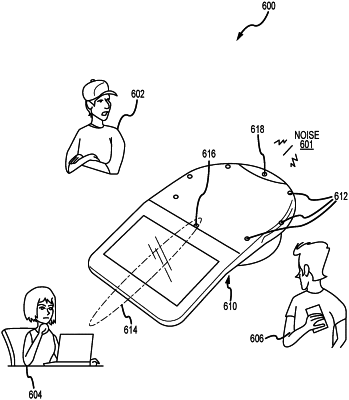| CPC G10L 21/0216 (2013.01) [G10K 11/17823 (2018.01); H04R 1/326 (2013.01); H04R 1/406 (2013.01); G10K 2200/10 (2013.01); G10K 2210/1082 (2013.01); G10K 2210/12 (2013.01); G10L 2021/02166 (2013.01); H04R 2201/40 (2013.01); H04R 2410/01 (2013.01); H04R 2430/20 (2013.01); H04R 2499/11 (2013.01)] | 17 Claims |

|
1. An electronic communication system with adaptive noise cancellation, comprising:
an array of microphones at a plurality of positions in a space for receiving a speech signal from one or more audio sources in the space and a noise signal from the space; and
a noise cancellation (NC) assembly comprising a processor executing code or instructions to provide functions of a localizer module and an NC processing module;
wherein the localizer module processes the speech signal from the one or more audio sources to determine a direction of an active talker,
wherein the NC processing module uses a first one of the microphones based on the direction of the active talker as an active talker source and a second one of the microphones, differing from the first one, based on the direction of the active talker as a noise source, and
wherein the NC processing module processes the output of the first and second microphones to generate an audio signal with noise cancellation,
wherein the first one of the microphones is selected to be in a direction matching the direction of the active talker or to be closest in relative position in the array of the microphones to a position of the active talker and wherein the second one of the microphones is selected is selected to be in an acoustical shadow of the first one of the active talker.
|